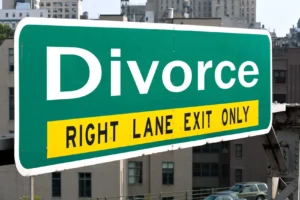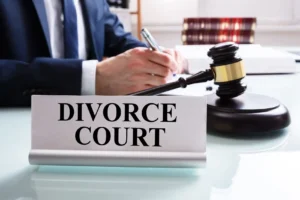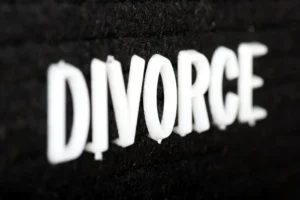How is domestic violence legal aid evolving to meet current needs?
The landscape of domestic violence legal aid is undergoing significant transformation to address the evolving needs of survivors in an increasingly complex legal and social environment. As the understanding of domestic violence deepens and societal awareness grows, legal aid providers are adapting their approaches to offer more comprehensive, trauma-informed, and accessible services to those seeking protection and justice.
One of the most notable developments in domestic violence legal aid is the expansion of services beyond traditional courtroom representation. While securing protective orders remains a critical component of legal assistance, providers are increasingly recognizing the need for a more holistic approach. This evolution includes addressing a broader range of legal issues that survivors often face, such as housing, employment, immigration, and financial matters. By offering support in these areas, legal aid organizations are helping survivors achieve long-term stability and independence, which are crucial for breaking the cycle of abuse.
The integration of technology has been a game-changer in the delivery of legal aid services to domestic violence survivors. Virtual consultations, online document preparation, and digital case management systems have made it possible for legal aid providers to reach more clients, especially those in rural or underserved areas. This technological shift has been particularly crucial in the wake of the COVID-19 pandemic, which saw a surge in domestic violence cases while simultaneously limiting in-person services. The ability to offer remote legal assistance has become not just a convenience but a necessity for ensuring the safety and access to justice for survivors.
Another significant evolution in domestic violence legal aid is the increased focus on trauma-informed legal services. This approach recognizes the profound impact of trauma on survivors and seeks to create a supportive, empowering environment throughout the legal process. Legal aid providers are receiving specialized training to understand the psychological effects of domestic violence, allowing them to better communicate with clients, prepare them for court proceedings, and advocate more effectively on their behalf. This trauma-informed perspective extends to all aspects of service delivery, from initial intake to case resolution, ensuring that the legal process itself does not re-traumatize survivors.
The collaboration between legal aid organizations and other community services has become increasingly robust. Recognizing that domestic violence survivors often have complex needs that extend beyond legal issues, many legal aid providers are now part of coordinated community response networks. These partnerships may include domestic violence shelters, counseling services, healthcare providers, and law enforcement agencies. By working together, these organizations can provide a more comprehensive support system for survivors, addressing both their immediate safety concerns and long-term well-being.
Legal aid providers are also placing a greater emphasis on prevention and education. Many organizations now offer community workshops, school programs, and public awareness campaigns to educate the public about domestic violence, legal rights, and available resources. This proactive approach aims to prevent abuse before it occurs and empower individuals to seek help early. Additionally, some legal aid organizations are working with policymakers to advocate for legislative changes that better protect survivors and hold abusers accountable.
The evolution of domestic violence legal aid has also seen an increased focus on serving marginalized and underrepresented communities. Recognizing that certain populations face additional barriers to accessing legal services, many organizations are developing culturally specific programs. These initiatives may target immigrant communities, LGBTQ+ individuals, or specific ethnic or linguistic groups, offering services that are not only linguistically accessible but also culturally sensitive and relevant to the unique challenges these communities face.
Financial constraints have long been a significant barrier for survivors seeking legal assistance. In response, legal aid organizations are exploring innovative funding models to expand their reach. Some are leveraging partnerships with private law firms to increase pro bono representation, while others are seeking grants and government funding specifically earmarked for domestic violence services. The Legal Services Corporation, a major funder of civil legal aid in the United States, has prioritized domestic violence cases, recognizing their critical importance and the high demand for these services.
The legal aid community is also adapting to address emerging forms of abuse, such as technological abuse and coercive control. As abusers increasingly use technology to monitor, harass, and control their victims, legal aid providers are developing expertise in digital safety and cybersecurity. They are helping clients navigate issues such as GPS tracking, social media harassment, and unauthorized access to personal accounts. Similarly, as more jurisdictions recognize coercive control as a form of domestic abuse, legal aid organizations are working to understand and address these less visible but equally damaging forms of violence.
Another area of evolution is the increased attention to the intersection of domestic violence and other legal issues. For instance, the connection between domestic violence and housing instability has led many legal aid organizations to develop specialized housing units. These teams work to prevent evictions, secure safe housing, and address landlord-tenant issues that often arise when survivors attempt to leave abusive situations. Similarly, recognizing the economic impact of domestic violence, some organizations are expanding their services to include financial literacy programs and assistance with debt management and credit repair.
The legal aid community is also responding to the unique needs of children affected by domestic violence. This includes not only representing parents in custody and visitation matters but also advocating for children’s rights and well-being in these proceedings. Some organizations are developing child-centered legal services, working directly with young clients to ensure their voices are heard in legal processes that affect their lives.
As the understanding of domestic violence as a public health issue grows, legal aid providers are increasingly collaborating with healthcare systems. Some organizations have established medical-legal partnerships, placing attorneys in healthcare settings to address the legal needs of patients experiencing domestic violence. This integrated approach allows for early intervention and provides a more seamless support system for survivors.
The evolution of domestic violence legal aid also includes a growing emphasis on economic empowerment. Recognizing that financial dependence is often a significant factor keeping survivors in abusive relationships, some legal aid organizations are expanding their services to include assistance with job training, education, and small business development. By helping survivors achieve economic independence, these programs aim to break the cycle of abuse and provide long-term stability.
Another important development is the increased focus on serving male survivors of domestic violence. While women remain the primary victims of intimate partner violence, there is growing recognition of the need for services tailored to male survivors. Legal aid organizations are working to overcome societal stigma and provide supportive, non-judgmental assistance to all survivors, regardless of gender.
The legal aid community is also adapting to serve survivors with disabilities, who face unique challenges in accessing services and navigating the legal system. This includes making physical spaces more accessible, providing materials in alternative formats, and training staff to work effectively with clients who have various disabilities. Some organizations are developing partnerships with disability rights groups to ensure their services are truly inclusive and meet the specific needs of this population.
As the understanding of the long-term impacts of domestic violence grows, some legal aid organizations are extending their services to address issues that may arise years after the abuse has ended. This might include assistance with modifying old court orders, addressing ongoing safety concerns, or dealing with the lasting economic consequences of abuse. By offering these long-term services, legal aid providers are recognizing that the effects of domestic violence can persist long after the immediate crisis has passed.
The evolution of domestic violence legal aid also includes an increased focus on serving LGBTQ+ survivors. Recognizing that this population may face unique forms of abuse and additional barriers to seeking help, some organizations are developing specialized programs and training staff to provide culturally competent services. This includes understanding the specific legal challenges LGBTQ+ survivors may face, such as discrimination in housing or employment, and navigating family law issues in jurisdictions that may not fully recognize their relationships.
Another area of development is the increased use of alternative dispute resolution methods in domestic violence cases, where appropriate and safe. While traditional litigation remains necessary in many cases, some legal aid organizations are exploring the use of mediation or restorative justice practices in certain situations. These approaches, when carefully implemented with robust safeguards, can provide survivors with more control over the resolution process and potentially lead to more satisfactory outcomes.
Legal aid providers are also increasingly recognizing the importance of self-care and support for their staff. Working with domestic violence survivors can be emotionally taxing, and organizations are implementing strategies to prevent burnout and secondary trauma among their attorneys and support staff. This might include offering counseling services, implementing reasonable caseload limits, and providing ongoing training on trauma-informed practices and self-care techniques.
The evolution of domestic violence legal aid extends to the courtroom itself, with many organizations advocating for and helping to implement court reforms. This includes pushing for specialized domestic violence courts, training judges and court personnel on the dynamics of abuse, and working to make court processes more survivor-friendly. Some legal aid providers are also involved in developing court watch programs, which monitor domestic violence cases to ensure fair treatment and identify systemic issues.
As the field of domestic violence legal aid continues to evolve, there is an increasing emphasis on data collection and outcome measurement. Organizations are developing more sophisticated methods to track the impact of their services, not just in terms of legal outcomes but also in terms of survivors’ long-term safety and well-being. This data-driven approach allows for continuous improvement of services and helps demonstrate the value of legal aid to funders and policymakers.
The legal aid community is also adapting to serve survivors in rural areas, who often face unique challenges in accessing services. This might include developing mobile legal clinics, partnering with local community organizations, or leveraging technology to provide remote services. Some organizations are also working to address the specific cultural and social factors that can make it difficult for rural survivors to seek help.
Another area of evolution is the increased focus on serving immigrant survivors, who may face additional legal challenges related to their immigration status. Legal aid organizations are developing expertise in immigration law and working to address the complex intersection of domestic violence and immigration issues. This includes assisting with VAWA self-petitions, U visas, and other forms of immigration relief available to survivors of domestic violence.
The legal aid community is also responding to the growing recognition of the link between domestic violence and human trafficking. Some organizations are expanding their services to address the unique legal needs of survivors who have experienced both domestic violence and trafficking, recognizing that these forms of abuse often intersect and require specialized legal expertise.
As the field of domestic violence legal aid continues to evolve, there is an increasing emphasis on prevention and early intervention. This includes working with schools and youth organizations to educate young people about healthy relationships and the signs of abuse. Some legal aid providers are also developing programs to work with individuals who have used violence, recognizing that addressing abusive behavior is an important part of preventing future violence.
In conclusion, the evolution of domestic violence legal aid reflects a growing understanding of the complex nature of domestic violence and the diverse needs of survivors. By expanding services, leveraging technology, adopting trauma-informed approaches, and fostering community partnerships, legal aid providers are working to create a more comprehensive and effective support system for those affected by domestic violence. As the field continues to adapt to new challenges and opportunities, the ultimate goal remains constant: to provide survivors with the legal tools and support they need to achieve safety, justice, and long-term well-being.
Website citations:
- https://www.legalaid.nsw.gov.au/about-us/news/media-releases/demand-for-dv-legal-aid-grows-amid-epidemic
- https://www.nciolta.org/media/730496/domestic-violence-report.pdf
- https://www.ojp.gov/pdffiles1/nij/grants/208612.pdf
- https://safehaven-foundation.org/empowering-victims-legal-aid-and-representation-for-survivors-of-domestic-violence/
- https://www.lsntap.org/node/233/technology-innovations-civil-legal-aid-clients-and-victims-crime-stronger-together
- https://www.justice.gov/ovw/legal-assistance-victims-program
- https://www.lonestarlegal.org/news/2023/04/legal-aid-for-survivors-of-domestic-violence-know-your-options/
- https://www.thehotline.org/resources/commonly-used-terms-when-discussing-domestic-violence/
- https://www.nlada.org/sites/default/files/Funding%20legal%20aid%20-%20DV%20and%20foster%20care.pdf
- https://www.thehotline.org/get-help/domestic-violence-legal-help/




















